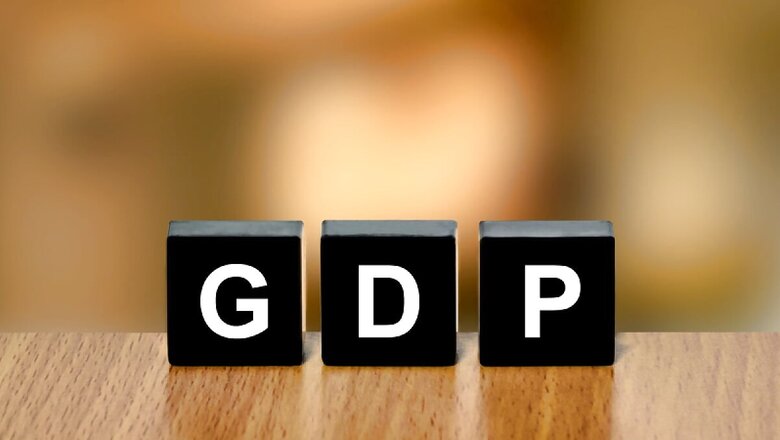
views
The country’s gross domestic product (GDP) is expected to grow 7.4 per cent in the current financial year 2022-23, according to the FICCI Economic Outlook Survey. It forecasts the growth for agriculture and allied activities at 3.3 per cent, while for industry and services sectors at 5.9 per cent and 8.5 per cent, respectively, during the fiscal year.
However, it said downside risks to economic growth remain escalated. “While the threat from the pandemic remains on fore, the continuation of Russia-Ukraine conflict is posing a significant challenge to global recovery.”
Industry body FICCI in a statement on Sunday also said that according to estimates provided by the Survey participants, global growth could slow by 50-75 basis points due to the conflict, further moderating the prospects of the post-COVID-19 recovery.
“The latest round of FICCI’s Economic Outlook Survey puts forth an annual median GDP growth forecast for 2022-23 at 7.4 per cent — with a minimum and maximum growth estimate of six per cent and 7.8 per cent, respectively,” the industry body stated.
The FICCI’s Economic Outlook Survey was conducted in March 2022 and drew responses from leading economists representing industry, banking and financial services sector. The economists were asked to provide forecast for key macroeconomic variables for the year 2022-23 and for January-March 2022 and April-June 2022 quarters.
The current Russia-Ukraine conflict is expected to further aggravate the price rise through imported commodities. The estimate for average Wholesale Price Index-based inflation in the March 2022 quarter has been put at 12.6 per cent, it said.
FICCI said, “The economists were of the view that the Reserve Bank of India will look at reversing its stance in the second half of the current year (2022) and one can expect a rate hike between 50-75 bps by end of this fiscal year.”
The industry body said retail inflation has also been treading above the targeted range of the RBI in January and February 2022 and should see some respite in the forthcoming fiscal year. “The unsustainably high international commodity prices are expected to level off going forward.”
The Survey said global inflation is likely to peak out in the first half of 2022 and moderate thereafter. The easing in price levels in the second part of the year will be backed by a slowing Chinese economy and overall moderation in global growth momentum, waning pent up demand, and monetary policy normalisation/rate hikes by the US Federal Reserve.
Moreover, exports that were providing a cushion to the loss of domestic output are likely to be subdued as the developed countries are also witnessing a slowdown and have been moving towards withdrawal of fiscal stimulus. Private demand and investment should be the focus in 2022-23 to steer growth, it said. Nonetheless, despite the challenges, Indian economy remains well placed over the medium term.
The participants said as inflation concerns ease, public capex will crowd in private capex. Recovery would hinge on the government’s infrastructure-led capital expenditure. The need of the hour is to front-load spending so that the nascent recovery signs are not derailed, according to the FICCI Economic Outlook Survey.
The economists opined that at this juncture, fiscal policy should be on front foot and inflation pressures could be contained via excise cuts / subsidies. This will be important to safeguard private consumption expenditure as inflation pressures gain strength, it said.
The RBI is expected to continue to support the ongoing economic recovery by keeping policy repo rate unchanged in April announcement. Growth impulses are still nascent and consumer confidence has been subdued and is yet to get back to pre-pandemic levels.
Also, continuing support to MSMEs remains critical especially given the impact of the ongoing conflict on smaller enterprises. It is important that the cash flows of the MSMEs enterprises is in place in order to maintain the operations. There is a need to ensure that additional funds for MSMEs are available and it is suggested that banks reduce the cash margin from 25 per cent to 10-15 per cent, according to the Survey.
India’s GDP grew 5.4 per cent in the December 2021 quarter as compared with growth of 8.4 per cent in the previous quarter.
Read all the Latest Business News and Breaking News here




















Comments
0 comment